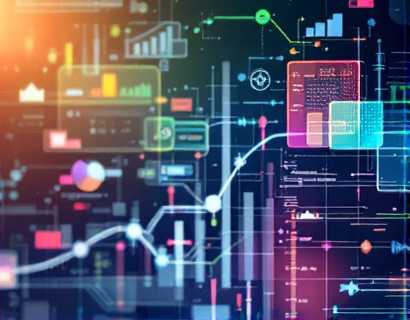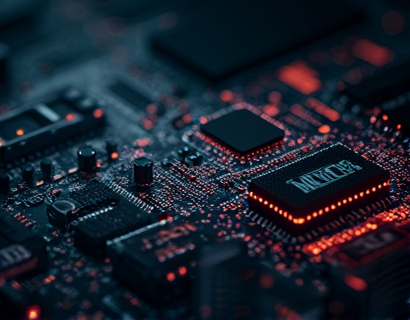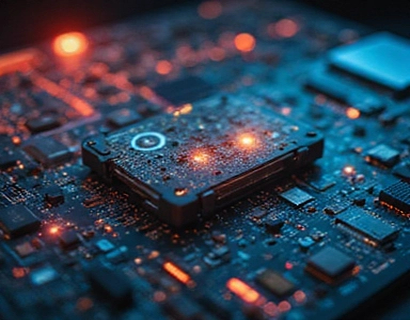Transforming Mathematics Education: The Power of Personalized AI-Driven Learning for Young Learners
In the rapidly evolving landscape of education, the integration of Artificial Intelligence (AI) is revolutionizing traditional learning methods, particularly in subjects like mathematics which have long been a source of challenge and anxiety for many students. An innovative AI-driven platform is emerging to address these challenges by offering a personalized learning experience tailored to the unique needs of each young learner, from age 5 to 18. This approach not only personalizes the learning journey but also combines interactive problem-solving, engaging resources, and adaptive pathways to build confidence, enhance academic performance, and foster a lifelong passion for mathematics and STEM fields.
The Need for Personalized Math Education
Traditional mathematics education often follows a one-size-fits-all approach, where students are taught at the same pace and through similar methods, regardless of their individual strengths, weaknesses, or learning styles. This can lead to a disconnect between the student and the material, resulting in disengagement and poor academic performance. Personalized AI-driven math education addresses this issue by adapting to each student's unique learning pace, style, and level of understanding. By doing so, it ensures that every child receives the support they need to succeed, thereby reducing the risk of falling behind and fostering a positive attitude towards math from an early age.
How AI Personalizes the Learning Experience
The core of this personalized learning experience lies in the sophisticated algorithms and machine learning models that power the AI platform. These technologies continuously analyze student performance data to identify areas of strength and weakness, adjusting the difficulty and type of problems presented in real-time. For instance, a student who excels in algebra but struggles with geometry will receive more geometry-focused exercises, along with additional resources and explanations tailored to their learning style. This dynamic adjustment ensures that each student is consistently challenged yet supported, promoting a deeper understanding of mathematical concepts.
Interactive Problem-Solving and Engaging Resources
One of the key features of this AI-driven platform is its emphasis on interactive problem-solving and engaging resources. Gone are the days of static textbooks and monotonous practice problems. The platform offers a variety of interactive tools, including virtual manipulatives, gamified exercises, and multimedia content, which make learning math an enjoyable and immersive experience. These interactive elements not only capture the attention of young learners but also help in visualizing complex concepts, making them more accessible and easier to grasp. For example, a lesson on fractions can be brought to life through interactive simulations where students can manipulate shapes to see how fractions work in real-time.
Adaptive Learning Pathways
Adaptive learning pathways are another crucial component of this personalized approach. The AI system creates a customized learning plan for each student based on their initial assessments and ongoing performance. This plan evolves over time, ensuring that the content remains relevant and challenging. Students progress through the curriculum at their own pace, with the system providing additional support or advanced challenges as needed. This flexibility not only helps in mastering current topics but also prepares students for more complex subjects in the future, laying a strong foundation for advanced STEM studies.
Building Confidence and Reducing Math Anxiety
Math anxiety is a common issue that can hinder a student's academic progress and overall enjoyment of the subject. The personalized nature of AI-driven math education plays a significant role in building confidence and reducing anxiety. By providing immediate feedback and focusing on individual progress rather than comparison with peers, students feel more at ease and motivated to tackle challenges. The platform's supportive environment, combined with the gradual increase in difficulty, helps students develop a growth mindset, viewing mistakes as opportunities to learn rather than failures. This positive reinforcement is crucial in fostering a lifelong love for mathematics and STEM.
Enhancing Academic Performance
The impact of personalized AI-driven math education on academic performance is profound. Studies have shown that students using such platforms exhibit significant improvements in math proficiency, with higher test scores and better retention of knowledge. The tailored approach ensures that each student receives the precise instruction they need, leading to a deeper understanding of the material. Moreover, the adaptive nature of the platform means that students are consistently engaged and challenged, which boosts their overall academic performance across all subjects. This holistic improvement is particularly beneficial for students who might otherwise struggle in a traditional classroom setting.
Fostering a Lifelong Passion for STEM
Beyond academic performance, the goal of this personalized AI-driven math education is to cultivate a genuine interest and passion for STEM fields. By making math enjoyable and accessible, the platform lays the groundwork for students to explore further into science, technology, engineering, and mathematics. The interactive and engaging nature of the learning experience sparks curiosity and encourages students to ask questions, think critically, and solve problems creatively. These skills are not only essential for success in math but also in a wide range of STEM careers. As students progress through the platform, they develop a sense of accomplishment and a belief in their ability to excel in STEM, which is vital for their future endeavors.
Supporting Diverse Learning Needs
The AI-driven platform is designed to be inclusive, catering to a wide range of learning needs and styles. For students with special educational needs, the platform offers customizable settings and support tools, such as text-to-speech, adjustable font sizes, and step-by-step guidance. This ensures that every child, regardless of their abilities, can access and benefit from the educational content. Additionally, the platform's multilingual capabilities make it accessible to a global audience, breaking down barriers and promoting equal educational opportunities.
Teacher and Parent Involvement
While the AI-driven platform is a powerful tool for individual learning, it also emphasizes the importance of teacher and parent involvement. The platform provides comprehensive dashboards and reports that offer insights into a student's progress, allowing educators and parents to monitor and support their learning journey. Teachers can use this data to identify areas where students may need additional help, tailor their classroom instruction, and provide targeted interventions. Parents can stay informed about their child's progress and engage in their learning process, creating a collaborative environment that enhances the overall educational experience.
Future Prospects and Challenges
As the field of AI in education continues to evolve, the potential for even more advanced and personalized learning experiences is vast. Future developments may include integration with other subjects, more sophisticated predictive analytics, and enhanced virtual and augmented reality components. However, with these advancements come challenges such as ensuring data privacy, maintaining the quality and accuracy of AI-generated content, and addressing the digital divide to ensure equitable access for all students. Addressing these challenges will be crucial in realizing the full potential of AI-driven math education.
Conclusion
In conclusion, personalized AI-driven math education represents a transformative shift in how we approach learning mathematics and STEM subjects. By leveraging the power of AI, we can create a more engaging, effective, and inclusive educational experience that empowers young learners to reach their full potential. As we continue to refine and expand these technologies, the future of education looks brighter, with students better equipped to succeed in an increasingly complex and interconnected world.










































